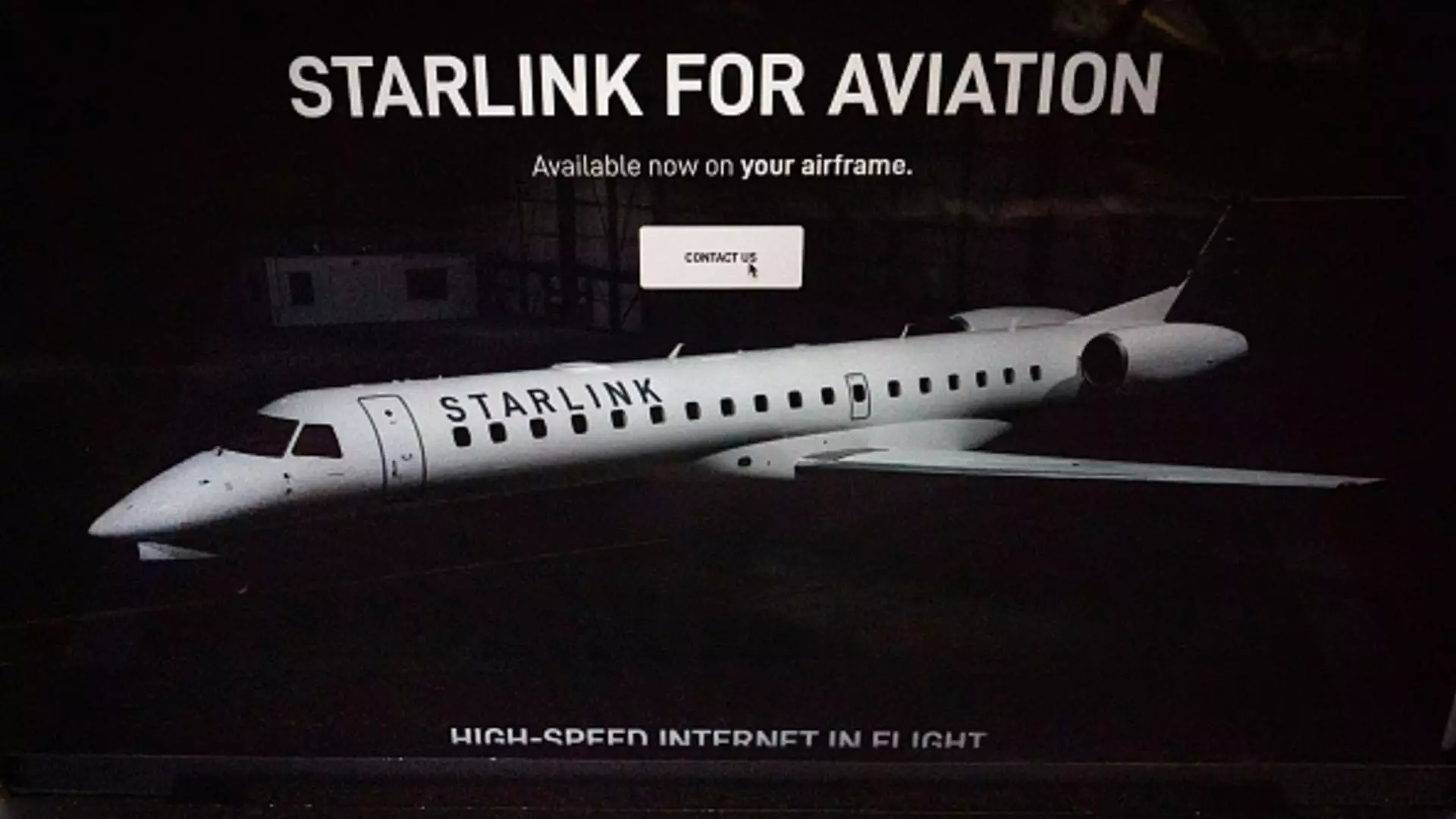In an era defined by rapid technological advancement, the aviation industry is experiencing a transformative shift in in-flight connectivity, thanks largely to SpaceX’s Starlink. Recent developments, particularly the major agreement with United Airlines, have underscored the potential of satellite-based internet services in revolutionizing air travel. This partnership, announced during the World Space Business Week in Paris, signifies a burgeoning opportunity for both SpaceX and airlines to enhance the passenger experience significantly. With approximately 2,500 aircraft now under contract, Starlink is poised to redefine the expectations travelers have regarding internet access at 30,000 feet.
The recent deal with United Airlines, which will see the installation of Starlink across its fleet of over 1,000 planes, represents the largest in-flight connectivity agreement to date for SpaceX. This move will ultimately phase out existing providers like Viasat and Gogo, a strategic decision that highlights United’s commitment to offering its passengers superior service without additional costs for Wi-Fi. In a world where digital connectivity is increasingly crucial, the integration of Starlink’s cutting-edge technology sends a strong message to competitors regarding the high standards passengers now demand from their air travel experience.
SpaceX’s director of aviation sales, Nick Galano, noted that this expansion not only boosts the company’s order backlog but also marks a significant leap forward from its nascent beginnings as a startup. The scale of Starlink’s operational capabilities, with more than 6,400 satellites currently in orbit serving around 3 million customers globally, positions the company as a leader in the satellite internet domain. With reported bandwidth capacity exceeding 300 terabits per second, Starlink’s offering far eclipses that of traditional in-flight connectivity systems.
One of the major obstacles airlines face when upgrading their in-flight connectivity systems is the retrofit process, which can ground aircraft for days, significantly impacting operations. SpaceX aims to address this pain point by streamlining installations. Galano expressed confidence that the process could be completed in under a day, as demonstrated with Hawaiian Airlines and JSX. This contrasts sharply with the longer retrofitting times experienced by competitors, such as Delta Air Lines, which averages around three days for its installation. Such innovations could ultimately alter how airlines approach technology upgrades, as less downtime translates to better operational efficiency and lower costs.
This emphasis on innovation speaks to the necessity of adapting to a rapidly changing market. As airlines compete for the loyalty of high-end customers, the difference in connectivity services could become a key differentiator. Investing in fast, reliable Wi-Fi could better secure a frequency flyer’s loyalty and expand membership in frequent flyer programs, as evidenced by Delta’s recent strategic pivot to offer complimentary service to members, resulting in a significant boost to their SkyMiles program.
SpaceX’s Starlink represents a significant evolution in how airlines can approach in-flight connectivity. By moving away from traditional service providers, airlines like United gain access to a superior technological foundation that enhances their operational capabilities. The ability to provide reliable, high-speed internet access without additional costs could be pivotal in attracting and retaining passengers who regard connectivity as essential during travel.
Moreover, the impact of this development extends beyond the airlines themselves. As SpaceX continues to launch new satellites, accessibility to reliable internet service will likely broaden, not just for air travelers, but also for maritime and remote community applications. The emphasis on global connectivity bridges gaps in communication that have historically hampered certain regions, suggesting a wider societal benefit as the technology proliferates.
The Road Ahead for Starlink and the Aviation Industry
As we look to the future, the implications of SpaceX’s expansion into in-flight connectivity are profound. The rapid advances in satellite infrastructure promise a more connected world, dramatically changing the expectations of travelers and potentially the operational landscape for airlines worldwide. The race to establish dominance in this burgeoning market has begun, with companies like SpaceX poised to reshape not only how we travel but how we interact with the world while in transit. The aviation industry stands on the cusp of a new era, where seamless connectivity could redefine in-flight experiences, prioritize passenger satisfaction, and ultimately contribute to a more enjoyable journey.


Leave a Reply